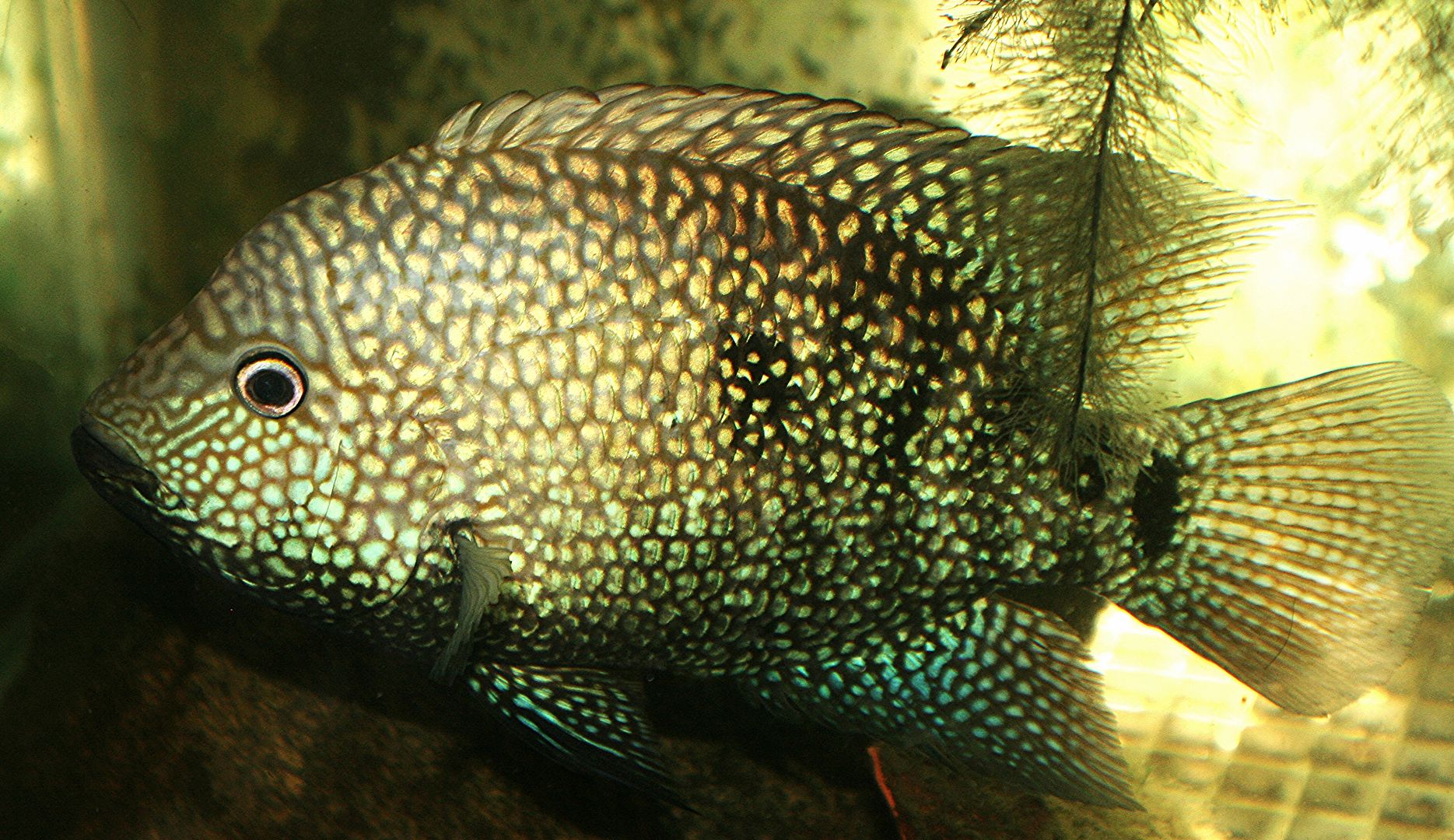Do you find that the more dominant female festae color up brighter, as I've observed with some male cichlids I've had?
Also I wonder if the 3.5 inch red Texas will be OK if I put him in with my 2-inch terrors in a 75 until they are about 4 to 4.5 inches long?
One juvenile female festae and juvenile male red Texas are slated to go into a 90 gallon with lots of driftwood, rocks and caves in the back and the left rest clear for swimming. No other tank mates. Do you think they can live well in that as they mature? A 125 will be difficult to obtain here but we could travel to a neighboring state with larger LFS to pick one up in the future. Would rather not, but....
P.S. - Anyone have a guess on whether the "H. cyanoguttatus" is just that or an H. carpintis? I was ready to say the latter for its meek manners but some of the markings (or lack thereof) on the head make me wonder. It also has a blueish sheen.
P.P.S. - Anyone have a guess as to its gender? It's only a little over 2 inches long. So far I'm leaning toward female but not positive.
Also I wonder if the 3.5 inch red Texas will be OK if I put him in with my 2-inch terrors in a 75 until they are about 4 to 4.5 inches long?
One juvenile female festae and juvenile male red Texas are slated to go into a 90 gallon with lots of driftwood, rocks and caves in the back and the left rest clear for swimming. No other tank mates. Do you think they can live well in that as they mature? A 125 will be difficult to obtain here but we could travel to a neighboring state with larger LFS to pick one up in the future. Would rather not, but....
P.S. - Anyone have a guess on whether the "H. cyanoguttatus" is just that or an H. carpintis? I was ready to say the latter for its meek manners but some of the markings (or lack thereof) on the head make me wonder. It also has a blueish sheen.
P.P.S. - Anyone have a guess as to its gender? It's only a little over 2 inches long. So far I'm leaning toward female but not positive.
Last edited:












